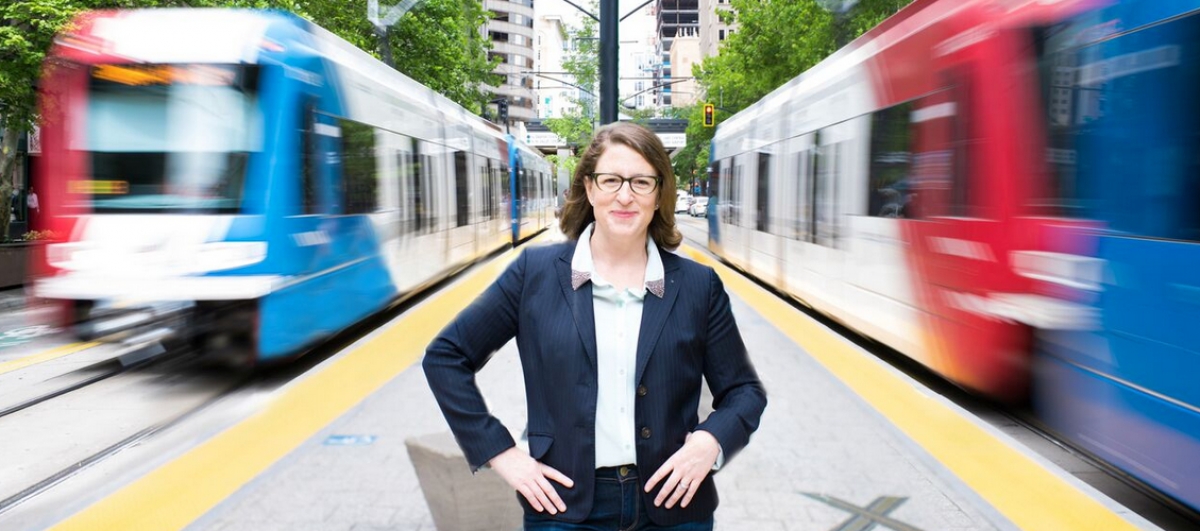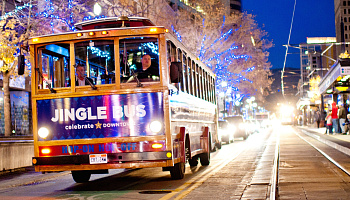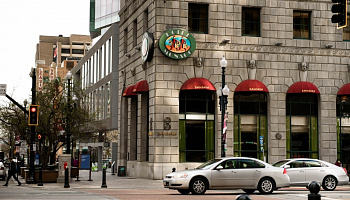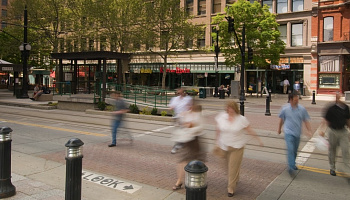Much has been made of the fact that Salt Lake City’s Transportation Director, Robin Hutcheson, is a woman. Examined through the lens of her profession, where almost everyone—from bus drivers and airplane mechanics to bicycle shop owners and civil engineers—is male, the position Hutcheson reached and her efforts to elevate her female colleagues (she founded the Utah Women’s Transportation Seminar chapter in 2007) do in indeed make her gender newsworthy. But she bristles at being labeled an advocate. “I think of myself more of a mentor than someone fighting for change,” she says. “I believe in a level playing field where anyone who does a good job can get ahead. My advocacy for women in transportation doesn’t define me.”
What is defining her—and what will likely be one of the distinguishing factors of her boss Mayor Ralph Becker’s political legacy—is how she’s leading a transformation in the way Salt Lake City residents get around.
Since taking the helm of the city’s transportation division in January 2012, Hutcheson and her staff have enjoyed plenty of success. The team she works with is a symbiotic mix of industry veterans and enthusiastic new talent. Salt Lake City’s notoriously problematic electronic paid parking system was fixed at zero cost to taxpayers. Walking was “brought back into the conversation” Hutcheson says, with the approval of and funding for installation of 21 new pedestrian safety devices throughout the city, including 10 HAWK (High intensity Activated crossWalK) Signals, five rapid flashing crosswalk beacons and three full traffic lights. And, of course, there’s the Hive Co-op Pass, a personal “labor of love” for Hutcheson that, thanks to subsidies from both Utah Transit Authority [UTA] and City Council, allows Salt Lake City residents unlimited access to city buses, TRAX, and the S-line streetcar for just $42 a month. These accomplishments, while significant, are just a taste of what Hutcheson and her staff are working on for the future.
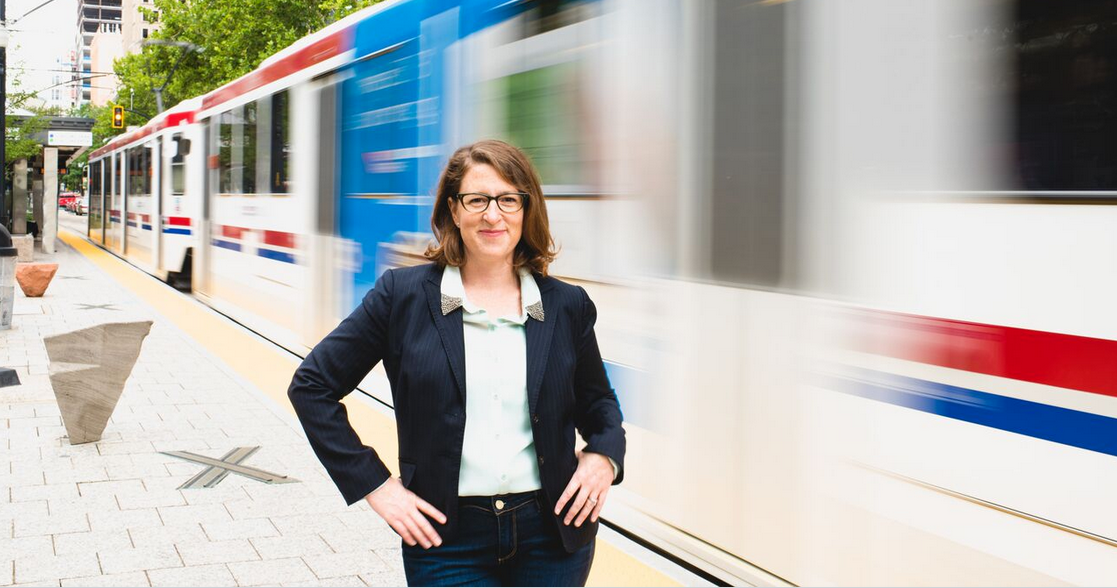
Here’s the forecast: Many of the projected 40,000 new residents and 20,000 new employees scheduled to arrive downtown by 2040 will spur residential and commercial development in what are now underdeveloped areas, allowing for shorter, more walkable and bikeable distances between destinations. Many suburban residents will continue to use their cars to travel into the city, but overall automobile usage will steadily decline, increasing demand for public transit to both get downtown and get around while here.
To meet this increasing and evolving demand, transportation in Salt Lake City will, in a nutshell, be about “more of everything,” Hutcheson says. A few specifics include the Downtown Streetcar, a proposed line running west from the University of Utah to 100 or 200 South, 400 West and then jogging south to 900 South. Bus routes and frequency will increase, including more express routes. Salt Lake City’s famously wide streets will be repurposed to provide safer and friendlier pedestrian navigation. “No one’s advocating getting rid of the car,” Hutcheson says. “But our demographic is changing. The Millennials and active boomers converging here don’t want their cars to be their primary form of transportation.”
Speaking of cars, for those who like to drive, take note: autonomous cars are coming sooner than you think. According to Hutcheson, driverless vehicles’ impact on public transit could look like this: riders would use their Smartphone to order a pick up through an Internet-based service similar to Uber or Lyft. But rather than arriving with a driver, an automated vehicle, constantly circulating on a set path, would stop to pick up and drop off passengers on demand. Automation could, with the human factor removed, be safer and potentially allow more cars on the road. “How automation will affect cities is still uncertain but we know it will and we’re doing our best as an industry to prepare,” Hutcheson says.
Another major way Hutcheson and her staff are preparing for the future is by crafting Salt Lake City’s first ever Transit Master Plan, scheduled for roll out in December. This plan is a citywide look at how buses and trains can be a better option for residents and visitors alike. It will guide decisions and investment both immediately and over the long term, and identify specific corridors for enhancement and restructuring. Plan collaborators include UTA, the University of Utah, the Salt Lake School District, and, perhaps most importantly, residents at large. Earlier this year transportation division staff hit the road in the Downtown Alliance’s Jingle Bus on a mobile tour of city events including the Downtown Farmer’s Market, the Twilight Concert Series and the Urban Flea Market gathering feedback from city residents about what they’d like public transit in Salt Lake City to look like. “We have never asked our residents what would make it easier for them to ride transit,” she says. “What is proposed in this plan will be directly related to what residents told us works and what doesn’t.”
Thanks to Brigham Young’s 132-feet-wide streets—wide enough so that a wagon team could turn around without “resorting to profanity”—downtown Salt Lake City’s streetscape offers an ample canvas for Hutcheson and her staff to re-think all transportation modes to better serve the people of Salt Lake City well into the future. She acknowledges that there will be some natural resistance to and conflict between the increased roadway users, “Change is hard,” Hutcheson says. But she also believes that the variety of options on the horizon will make our city a more vibrant, more usable, and an overall better place to live. “I couldn’t be more proud of what our city has become, particularly over the past 10 years, and transportation has been a part of that. People want choices in the ways they travel. My job is to provide people with those choices, minimize conflict between users, and do the best we can to protect this amazing place we call home, which at the end of the day, is draws people to live and stay here in the first place.”

